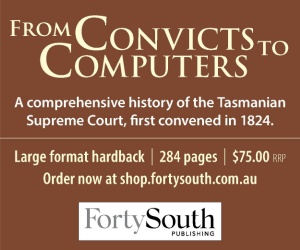When real or personal property is the subject of a dispute, one party will often want to ensure that the other does not dispose of the property or otherwise interfere with it pending trial.
What is the best way to preserve that property?
An injunction is one way of achieving that outcome, but getting over the hurdles necessary to establish an injunction may be challenging, or the need to provide an undertaking as to damages could be difficult for some clients.1
Rule 250 of the Uniform Civil Procedure Rules (UCPR) offers another possible solution. That rule relevantly provides:
250 Inspection, detention, custody and preservation of property
(1) The court may make an order for the inspection, detention, custody or preservation of property if—
(a) the property is the subject of a proceeding or is property about which a question may arise in a proceeding; or
(b) inspection of the property is necessary for deciding an issue in a proceeding.
The rule has been interpreted broadly. In Evans Deakin Pty Ltd v Orekinetics Pty Ltd,2 Chesterman J said that the “discretion conferred by the rule is a wide one … the order should not be made unless, on the material before the court, it is proper to do so. It must be remembered that the rule exists to promote the efficient and economical conduct of litigation. If the result of an inspection would tend to bring about such a result the discretion should, I apprehend, ordinarily be exercised in favour of inspection subject to there being some countervailing circumstance.”
The court can make a wide range of orders under the rule. These include (r250(3)):
- orders to enter a place to gain access to the property
- taking samples
- making observations and taking photographs
- conducting experiments on property, and
- observing a process.
Rule 252 makes clear that an order made under r250 may bind a non-party to proceedings.
In making an order, a court may impose certain conditions it considers appropriate (r250(4)). These could include the payment of costs of a person who is not a party and who must comply with an order or security for costs. For example, if a plaintiff’s vehicle is being held at a service centre, orders could be made permitting the plaintiff or its representatives to access the centre and make observations about the vehicle, subject to the service centre’s costs being covered by the plaintiff.
How to make an application under r250
In urgent cases, an application may be brought before a proceeding starts (r254). However, ordinarily an interlocutory application would be brought under r31 supported by an affidavit explaining the reasons why such an order should be made.
The applicant must make all reasonable inquiries to find out who has, or claims to have, an interest in the property. Anyone who has such an interest should be served with the application and supporting affidavits before a court will make an order under r250 (r253).
When might an order under r250 be appropriate?
It is worth noting that the two limbs in r250(1) operate as independent bases for the making of preservation or inspection orders.
In Wilsons Ceramics Pty Ltd v Pantaenius Australia Pty Ltd (Wilsons Ceramics), Kefford DCJ noted that subrule 1(b) was broader than (a) but that subrule (b) has an additional requirement that the inspection be “necessary” for deciding an issue in a proceeding.3 There is no such requirement in subrule (a).
In Wilsons Ceramics, damage to the hull of a yacht was in issue. Testing had been carried out by experts and the defendant applied for further testing under r250. Kefford DCJ refused to permit further testing, in part because the proposed expert did not appear to have the relevant expertise and it was not clear what utility the proposed tests would have.
In contrast, in GE Automotive Financial Services Pty Ltd v Laverty,4 Judge McGill made preservation orders in relation to a motor vehicle which was the subject of a loan agreement in issue between the parties. His Honour also made orders that the defendant provide information on the likely whereabouts of the vehicle and other information which might enable the plaintiff to locate it.
Recently, I acted in proceedings where preservation orders were made in respect of farm and earthmoving machinery which was the subject of a claim for a constructive trust. The orders contained provision for the respondent to provide information on the location of equipment and for the applicant to enter the respondent’s property and take photographs, test and record information about the equipment. The respondent was ordered to preserve the equipment pending trial.
Conclusion
Preservation and inspection orders under UCPR r250 can provide a powerful means by which a party can ensure that property is maintained until trial without the need to establish a basis for injunctive relief. The court is empowered to make a wide range of orders which may be crafted to fit the particular circumstances of the case.
Alexander McKinnon is a Brisbane barrister and member of 16 Quay Central Chambers.
Footnotes
1 For the requirements to establish an injunction, see Australian Broadcasting Corp v O’Neill (2006) 227 CLR 57 at [19]: “…a court will ask whether the plaintiff has shown that there is a serious question to be tried as to the plaintiff’s entitlement to relief, has shown that the plaintiff is likely to suffer injury for which damages will not be an adequate remedy, and has shown that the balance of convenience favours the granting of an injunction.”
2 [2002] 2 Qd R 345 at [19].
3 [2021] QDC 074 at [11].
4 [2008] QDC 313.














Share this article